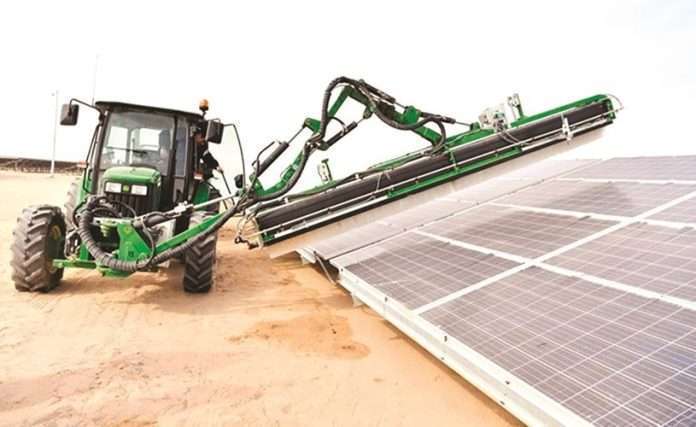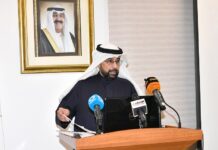Kuwait lags far behind in the use of renewable energy, from the target percentage announced at the United Nations Climate Change Conference which has set the target of one percent from 2015 to 15 percent in 2030 saying renewable energy represents 0.3% of the total installed capacity of the power plants in the country at the end of 2020 according to a government report.
Although the International Renewable Energy Agency praised Kuwait in 2010 as being among the first countries to ratify the establishment of the organization saying it was a message to the world by beginning its transition to the era of using renewable energy, the implementation to achieve this has been slow, reports a local Arabic daily.
The report stated that the Ministry of Electricity, Water and Renewable Energy must address project observations in order for the state to achieve its goal of increasing the proportion of electricity production from renewable sources, in a way that ensures sustainable prosperity and Kuwait’s global contribution to avoiding an increase in greenhouse gases by 7.4% until 2035, as announced recently by the United Nations Climate Change Conference which was held in Glasgow, UK.
The report monitored four renewable energy projects in Kuwait. The estimated value of the implementation of these 4 projects is 23.5 million dinars, and the ministry’s budget included the financial appropriation of 100,000 dinars for only one project, which is (installing photovoltaic panels on the roofs of the underground water tanks of Al-Subbiya), noting that the ministry cannot at all be certain of a date for the operation for any of them due to some factors.
Kuwait is a member of the International Renewable Energy Agency (IRENA), which aims to encourage member states to introduce renewable energy as a national priority in their economies to stimulate sustainable growth and reduce the concentration of greenhouse gas emissions in the atmosphere to preserve the environment and not put pressure on its natural resources. Statute of the Agency on June 19, 2009 in the German city of Bonn, and approved by the National Assembly as a law on May 1, 2013.
The government of Kuwait has 4 agreements and memoranda of understanding with governments of the world in the field of renewable energy.
The State of Kuwait is at the bottom of the list of Arab and international countries in the transition to the field of renewable energy, despite its signing of 3 memoranda of understanding and framework agreements with countries that have managed to secure advanced ranks globally, led by the sisterly Kingdom of Morocco, which is ranked among the top 15 global countries in this field.
This requires the activation of those memoranda and agreements to enable the State of Kuwait to acquire global and practical knowledge in this field in order to fulfill its commitments made to the international community and raise its rank to the rank it deserves.
The data stated that the total development of the installed capacity of electric power stations in Kuwait from 1991 to 2020 was 20223 MW, distributed by the end of 2020 as follows — Shuwaikh Station 252 MW, Shuaiba North Station 875.5 MW, Shuaiba South Station 720 MW and Doha Entertainment Station 1122 MW, the Doha West plant is 2,541 MW, the Az-Zour South plant is 6055.8 MW, the Sabiya plant has a capacity of 7046.7 MW, and the North Az-Zour plant is 1,540 MW and as for the Shaqaya renewable energy plant, it is only 70 MW.

















